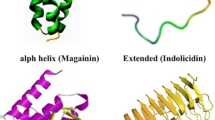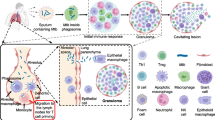Abstract
Secreted aspartyl proteinases (SAP) are the key virulence factors that play a central role in the pathogenesis of Candida albicans and always are the best target for designing potent antifungal agents. Cyanobacteria have already been recognized to provide chemical and pharmacological novelty and diversity over conventional sources of drugs for combating major diseases ranging from AIDS to cancer. In this study, the two ABC transporter systems — permease proteins from Microcoleus chthonoplastes PCC 7420 were modeled and the protein-protein interaction assessment of the modeled proteins with selective secreted aspartyl proteinases of Candida albicans was attempted. The modeled proteins were assigned PMDB IDs PM0077423 and PM0077424. The secreted aspartyl protease 5 of Candida albicans showed effective interaction with ABC transporter permease protein 2 of Microcoleus chthonoplastes PCC 7420. Hydrophobic interactions were found between Tyr, Phe and Pro in chain A and Pro and Tyr in chain B. Our results of the docked complexes clearly demonstrated the potentiality of permease proteins in arresting the virulence nature of SAP of Candida albicans effectively. This study is first of its kind in addressing the therapeutic intervention of virulence nature of Candida albicans by the cyanobacterial system.
Similar content being viewed by others
Abbreviations
- ABC:
-
ATP binding cassettes
- SAP:
-
secreted aspartyl proteinases
- PMDB:
-
protein modelling database
- NRPS:
-
non-ribosomal peptide synthase
- PKS:
-
polyketide synthetase
References
Abad-Zapatero, C., Goldman, R., Muchmore, S.W., Hutchins, C., Stewart, K.W., Navaza, J., Payne, C.D., Ray, T.L. 1996. Structure of a secreted aspartic protease from C. albicans complexed with a potent inhibitor: implications for the design of antifungal agents. Protein Sci 5, 640–652.
Bein, M., Schaller, M., Kortig, H.C. 2002. The secreted aspartic proteinases as a new target in the therapy of candidiasis. Curr Drug Targets 3, 51–57.
Benkert, P., Biasini, M., Schwede, T. 2011. Towards the estimation of the absolute quality of individual protein structure models. Bioinformatics 27, 343–350.
Bradford, J.R., Westhead, D.R. 2005. Improved prediction of protein-protein binding sites using a support vector machines approach. Bioinformatics 21, 1487–1494.
Bryson, K., McGuffin, L.J., Marsden, R.L., Ward, J.J., Sodhi, J.S., Jones, D.T. 2005. Protein structure prediction servers at University College London. Nucl Acid Res 33, W36–W38.
Capobianco, J.O., Lerner, C.G., Goldman, R.C. 1992. Application of a fluorogenic substrate in the assay of proteolytic activity and in the discovery of a potent inhibitor of Candida albicans aspartic proteinase. Anal Biochem 204, 96–102.
Ceroni, A., Passerini, A., Vullo, A., Frasconi, P. 2006. DISULFIND: A disulfide bonding state and cysteine connectivity prediction server. Nucl Acid Res 34, W177–W181.
Christiansen, G., Dittmann, E., Ordorika, L.V., Rippka, R., Herdman, M., Börner, T. 2001. Nonribosomal peptide synthetase genes occur in most cyanobacterial genera as evidenced by their distribution in axenic strains of the PCC. Arch Microbiol 176, 452–458.
De Viragh, P.A., Sanglard, D., Togni, G., Falchetto, R., Monod, M. 1993. Cloning and sequencing of two Candida parapsilosis genes encoding acid proteases. J Gen Microbiol 139, 335–342.
Dundas, J., Ouyang, Z., Tseng, J., Binkowski, A., Turpaz, Y., Liang, J. 2006. CASTp: Computed atas of surface topography of proteins with structural and topographical mapping of functionally annotated residues. Nucl Acid Res 34, W116–W118.
Edmond, M.B., Wallace, S.E, McClish, D.K., Pfaller, M.A., Jones, R.N., Wenzel, R.P. 1999. Nosocomial bloodstream infections in United States hospitals: A three-year analysis. Clin Infect Dis 29, 239–244.
Eswar, N., Marti-Renom, M.A., Webb, B., Madhusudhan, M., Eramian, D., Shen, M., Pieper, U., Sali, A. 2006. Comparative protein structure modeling with MODELLER. In: Current Protocols in Bioinformatics, John Wiley & Sons, Inc., Hoboken, Supplement 15, 5.6.1–5.6.30.
Fraczkiewicz, R., Braun, W. 1998. Exact and efficient analytical calculation of the accessible surface areas and their gradients for macromolecules. J Comp Chem 19, 319–333.
Garcia-Pichel, F., Prufert-Bebout, L., Muyzer, G. 1996. Phenotypic and phylogenetic analyses show Microcoleus chthonoplastes to be a cosmopolitan cyanobacterium. Appl Environ Microbiol 62, 3284–3291.
Gasteiger, E., Hoogland, C., Gattiker, A., Duvaud, S., Wilkins, M.R., Appel, R.D., Bairoch, A. 2005. Protein identification and analysis tools on the ExPASy Server. In: Walker, J.N. (Ed.), The Proteomics Protocols Handbook, Humana Press, Totowa, 571–607.
Guex, N., Peitsch, M.C. 1997. SWISS-MODEL and the Swiss-PdbViewer: An environment for comparative protein modeling. Electrophoresis 18, 2714–2723.
Hirokawa, T., Boon-Chieng, S., Mitaku, S. 1998. SOSUI: Classification and secondary structure prediction system for membrane proteins. Bioinformatics 14, 378–379.
Kuntal, B., Aparoy, P., Reddanna, P. 2010. EasyModeller: A graphical interface to MODELLER. BMC Res Notes 3, 226.
Laskowski, R.A., Watson, J.D., Thornton, J.M. 2005. ProFunc: A server for predicting protein function from 3D structure. Nucl Acid Res 33, W89–W93.
Laurie, A.T., Jackson, R.M. 2005. Q-SiteFinder: An energy-based method for the prediction of proteinligand binding sites. Bioinformatics 21, 1908–1916.
Maiti, R., Gary, H., Domselaar, V., Zhang, H., Wishart, D.S. 2004. SuperPose: A simple server for sophisticated structural superposition. Nucl Acid Res 32, W590–W594.
Marsden, R.L., McGuffin, L.J., Jones, D.T. 2002. Rapid protein domain assignment from amino acid sequence using predicted secondary structure. Protein Sci 11, 2814–2824.
Monod, M., Capoccia, S., Léchenne, B., Zaugg, C., Holdom, M., Jousson, O. 2002. Secreted proteases from pathogenic fungi. Int J Med Microbiol 292, 405–419.
Monod, M., Hube, B., Hess, D., Sanglard, D. 1998. Differential regulation of SAP8 and SAP9, which encode two new members of the secreted aspartic proteinase family in Candida albicans. Microbiology 144, 2731–2737.
Monod, M., Togni, G., Hube, B., Sanglard, D. 1994. Multiplicity of genes encoding secreted aspartic proteinases in Candida species. Mol Microbiol 13, 357–368.
Naglik, J.R., Challacombe, S.J., Hube, B. 2003. Candida albicans secreted aspartyl proteinases in virulence and pathogenesis. Microbiol Mol Biol 67, 400–428.
Pettersen, E.F., Goddard, T.D., Huang, C.C., Couch, G.S., Greenblatt, D.M., Meng, E.C., Ferrin, T.E. 2004. UCSF Chimera — a visualization system for exploratory research and analysis. J Comput Chem 25, 1605–1612.
Pettit, K., Bare, E., Tsai, A., Bowie, J.U. 2007. Hot-Patch: A statistical approach to finding biologically relevant features on protein surfaces. J Mol Biol 369, 863–879.
Pfaller, M.A., Jones, R.N., Messer, S.A., Edmond, M.B., Wenzel, R.P. 1998. National surveillance of nosocomial blood stream infection due to Candida albicans: Frequency of occurrence and antifungal susceptibility in the SCOPE program. Diagn Microbiol Infect Dis 31, 327–332.
Ruping, M.J., Vehreschild, J.J., Cornely, O.A. 2008. Patients at high risk of invasive fungal infections: When and how to treat? Drugs 68, 1941–1962.
Salome, L.L., Berenice, P.O., Consuelo, B.M., Cesar, C.C., Hugo, H.C., Lourdes, V.T. 2007. The proteolytic system of Candida dubliniensis. Amer J Infect Dis 3, 76–83.
Schneidman-Duhovny, D., Inbar, Y., Nussinov, R., Wolfson, H.F. 2005. PatchDock and SymmDock: Servers for rigid and symmetric docking. Nucl Acid Res 33, W363–W367.
Scholz, B., Liebezeit, G. 2006. Chemical screening for bioactive substances in culture media of microalgae and cyanobacteria from marine and brackish water habitats: First results. Pharmaceut Biol 44, 544–549.
Sobel, J.D. 1988. Pathogenesis and epidemiology of vulvovaginal candidiasis. Ann NY Acad Sci 544, 547–557.
Sobel, J.D. 1992. Pathogenesis and treatment of recurrent vulvovaginal candidiasis. Clin Infect Dis 14, S148–S153.
Söding, J., Biegert, A., Lupas, A.N. 2005. The HHpred interactive server for protein homology detection and structure prediction. Nucl Acid Res 33, W244–W248.
Stewart, K.W., Abad-Zapatero, C. 2001. Candida proteases and their inhibition: Prospects for antifungal therapy. Curr Med Chem 8, 941–948.
Stewart, K.W., Goldman, R.C., Abad-Zapatero, C. 1999. The secreted proteinases from Candida: Challenges for structure-aided drug design. In: Dunn, B.N. (Ed.), Proteases of Infectious Agents, Academic Press, Inc., San Diego, 117-138.
Tina, K.G., Bhadra, R., Srinivasan, N. 2007. PIC: Protein interactions calculator. Nucl Acid Res 35, W473–W476.
Vriend, G. 1990. WHAT IF: A molecular modeling and drug design program. J Mol Graph 8, 52–56.
Zaugg, C., Borg-von Zepelin, M., Reichard, D., Sanglard, D., Monod, M. 2001. Secreted aspartic proteinase family of Candida tropicalis. Infect Immun 69, 405–412.
Author information
Authors and Affiliations
Corresponding author
Rights and permissions
About this article
Cite this article
Manivannan, P., Muralitharan, G. Molecular modeling of abc transporter system — permease proteins from Microcoleus chthonoplastes PCC 7420 for effective binding against secreted aspartyl proteinases in Candida albicans — A therapeutic intervention. Interdiscip Sci Comput Life Sci 6, 63–70 (2014). https://doi.org/10.1007/s12539-014-0189-x
Received:
Revised:
Accepted:
Published:
Issue Date:
DOI: https://doi.org/10.1007/s12539-014-0189-x




